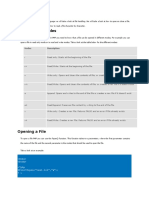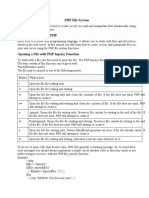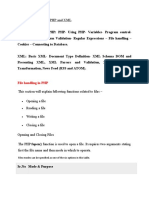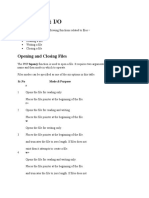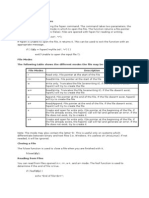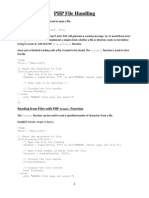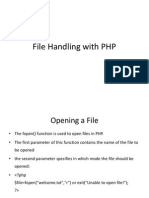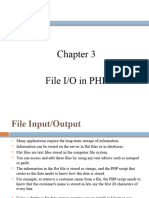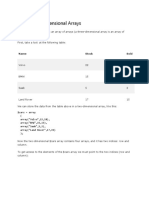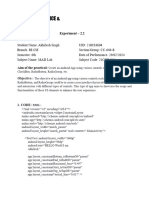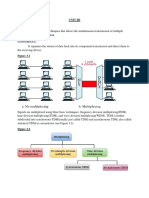0% found this document useful (0 votes)
28 views8 pagesPHP File Handling
The document provides an overview of PHP file handling functions including fopen(), fclose(), fread(), fwrite(), and unlink(). It explains how to open, read, write, append, and delete files using PHP, along with examples and syntax for each function. Additionally, it describes different file modes for opening files and their effects on file operations.
Uploaded by
sardarom9Copyright
© © All Rights Reserved
We take content rights seriously. If you suspect this is your content, claim it here.
Available Formats
Download as PDF, TXT or read online on Scribd
0% found this document useful (0 votes)
28 views8 pagesPHP File Handling
The document provides an overview of PHP file handling functions including fopen(), fclose(), fread(), fwrite(), and unlink(). It explains how to open, read, write, append, and delete files using PHP, along with examples and syntax for each function. Additionally, it describes different file modes for opening files and their effects on file operations.
Uploaded by
sardarom9Copyright
© © All Rights Reserved
We take content rights seriously. If you suspect this is your content, claim it here.
Available Formats
Download as PDF, TXT or read online on Scribd
/ 8

